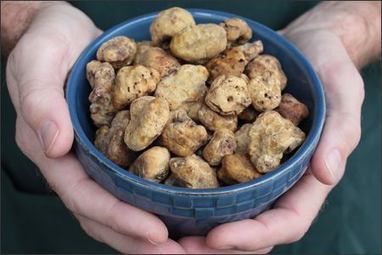The first use of the tomato inside recipes started, of course, with the wealthy Spain, with an empire able to get the best from the Old and New Worlds, so it was a great success for the forty-year-old Antonio Latini. Native from Collamato of Fabriano in Le Marche, Latini was taken into the kitchen service of Cardinal Antonio Barberini, one of Pope Urban VIII’s numerous nephews and then served as a steward in other noble and ecclesiastical households in Macerata, Bologna, and again in Rome, before being offered the post of steward to Esteban Carrillo y Salcedo, a grandee of Spain and regent to the Spanish viceroy of Naples.
He was now in charge of cooking in Carillo’s villa on the slopes of Vesuvius, overlooking the Bay of Naples, where Carillo "often banqueted with the most noble personages in royal splendor and magnificence." Here Latini was rewarded with the titles of knight of the golden spur and count palatine, dictated his autobiography in 1690, and compiled his masterpiece, Lo scalco alla moderna, published in two volumes a few years before his death in 1696.
On the one hand, it is the culmination of Italian court cooking before the triumph of French cuisine in the eighteenth century. On the other hand, Latini is not afraid to use popular food traditions, from vegetable soups to tripe and other offal; to develop a "new way of cooking without spices," using herbs rather than strong flavorings; and to experiment with newer ingredients, like turkey, chocolate, chilies, maize, and, of course, the tomato. All the dishes in which the tomato appears are indicated as "in the Spanish style" (alla spagnuola).
Latini’s three recipes are the first time tomatoes were used in European culinary literature, they met the increasing demand for condiments and dishes that were flavorful but not based on spices.
Via Mariano Pallottini



 Your new post is loading...
Your new post is loading...








